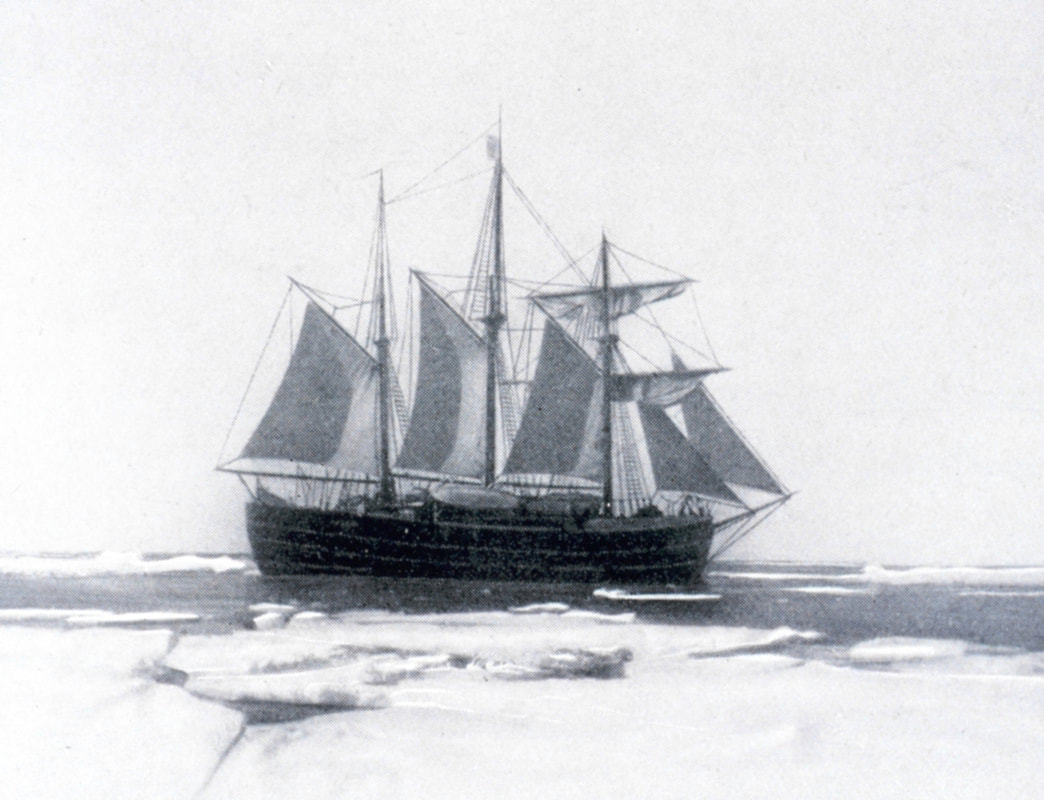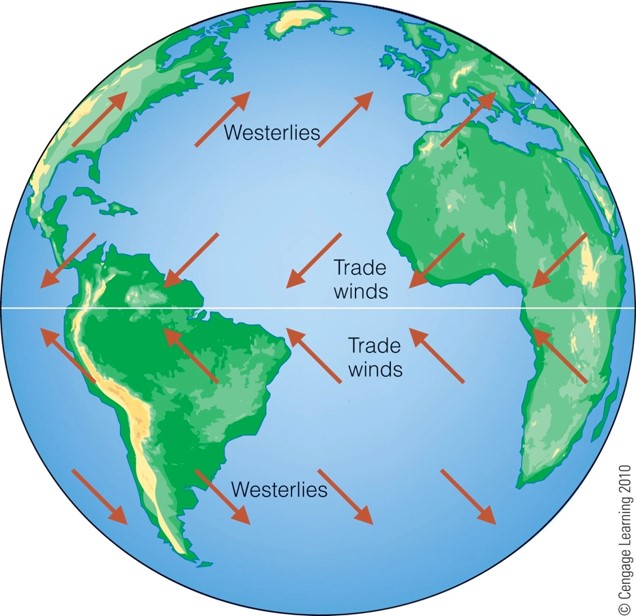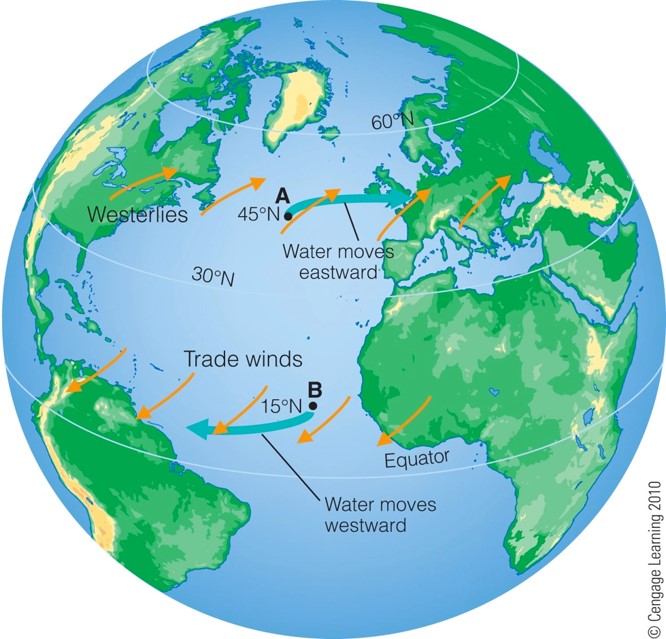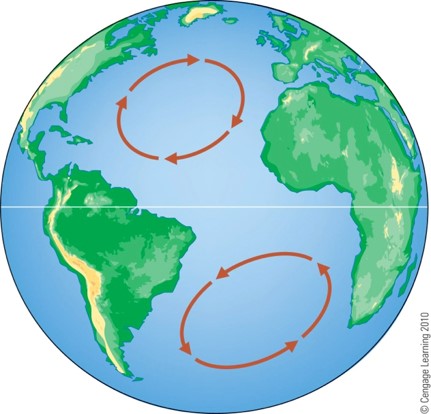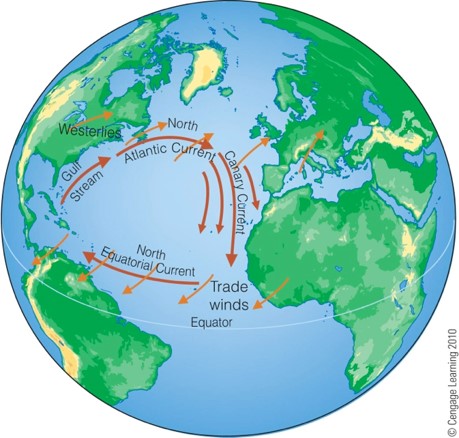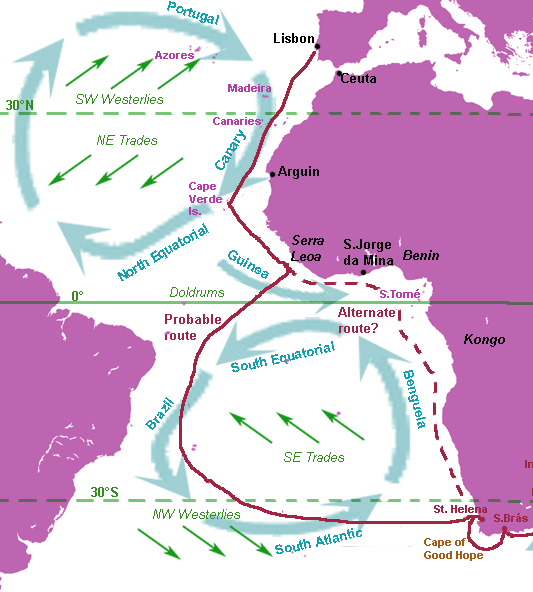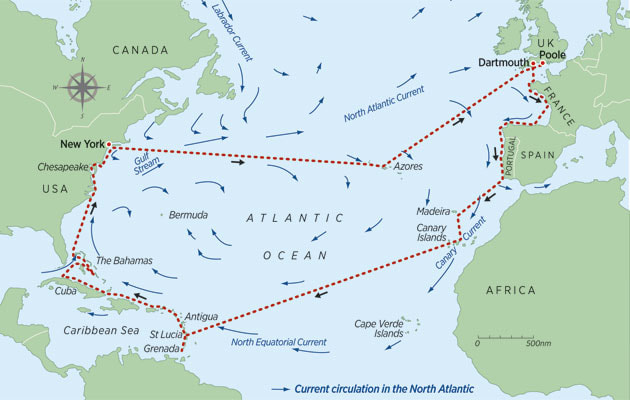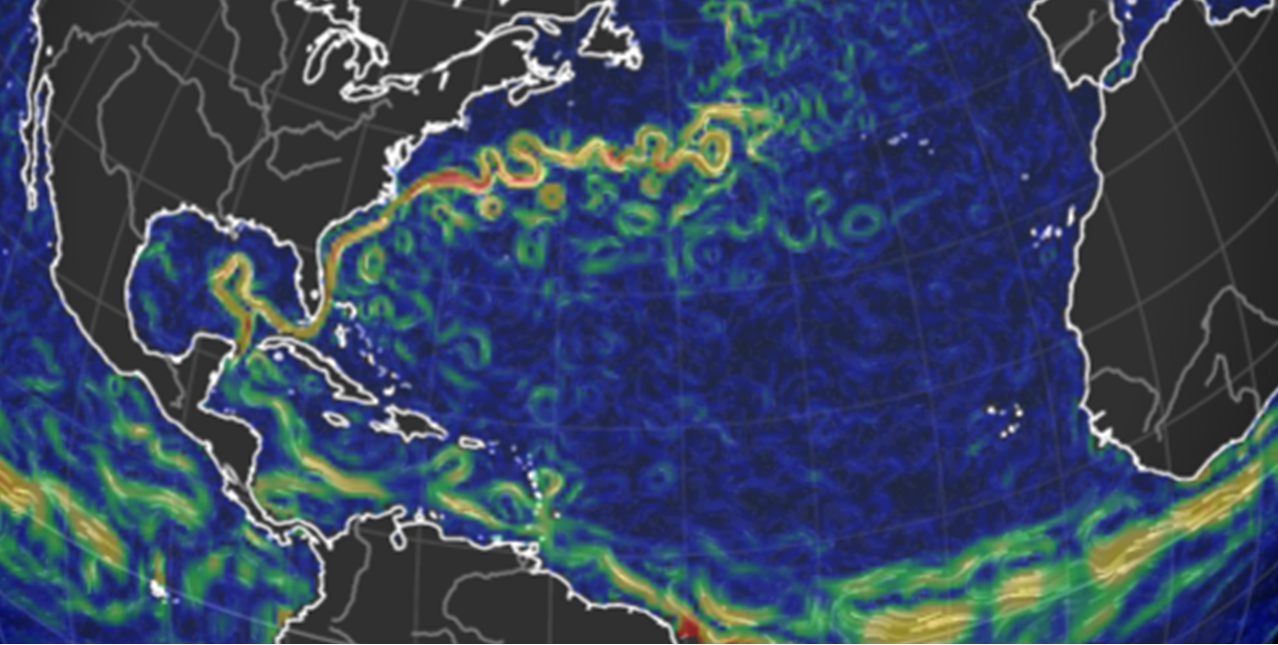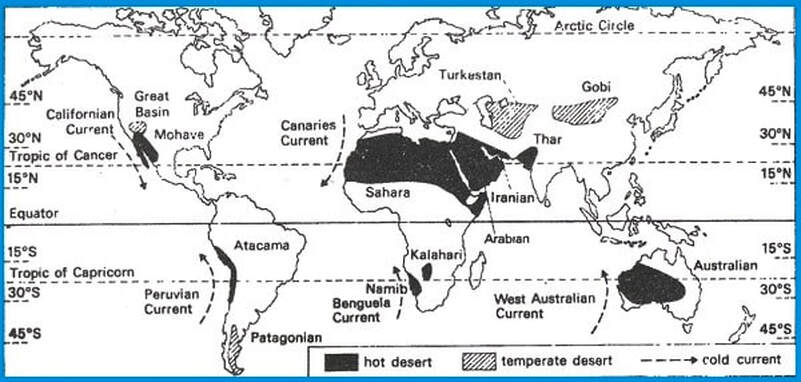3.3 - Surface Currents
Objectives:
- To understand that the atmosphere and oceans are interlinked and that the prevailing surface winds drive currents in the surface layer of the ocean.
- To understand that the surface currents are constrained by the geography of the ocean basins.
- To know that the properties of the ocean affect the regional climates.
- Be able to correlate the cold surface currents with desert climates.
Both the atmosphere and ocean are fluids and they interact with each at the surface where they meet. The temperature and humidity of the atmosphere can affect the rate of evaporation from the surface which can affect the salinity. Heavy rainfall can reduce the salinity. The density of the air is 1000 x less than that of the ocean, so changes in the atmosphere occur far faster than that of the sea. One of the largest effects of the movement of the atmosphere is to induce movement in the surface layer of the ocean below it - driving the surface currents.
|
It would be easy to imagine that as the wind blows across the surface of the sea, it causes the water to move in the same direction as the wind is blowing. However, that is not exactly the case. This was conclusively demonstrated by the Fram expedition, where a ship was carried over the North Pole by the ice flows that float over the Arctic Ocean. A Swedish scientist named Ekman worked out that the average surface current moves at an angle to the prevailing wind. This is due to the effects of friction between successive 'layers' of water and the Coriolis Effect.
|
As the wind blows across the water, the surface layer starts to move. As it moves it is is deflected to the right due to the Coriolis Effect. It reaches its maximum speed when the Coriolis Effect balances the frictional drag between that layer of water and the layer below it. The next layer of water is also being dragged by the water above it and starts to move, and is again deflected to the right. This keeps on going through successive layers until the energy has all been dissipated. The net effect is that the top \(100\,\text{m}\) or so of the ocean as a whole is dragged at almost \(90^{\circ}\) to the direction of the wind. The very upper surface layer moves about \(30^{\circ}\) to the prevailing wind. As the water is far denser it moves slower but has far more inertia than the winds. So, even if the wind stops blowing or change direction for several days the surface currents keep flowing.
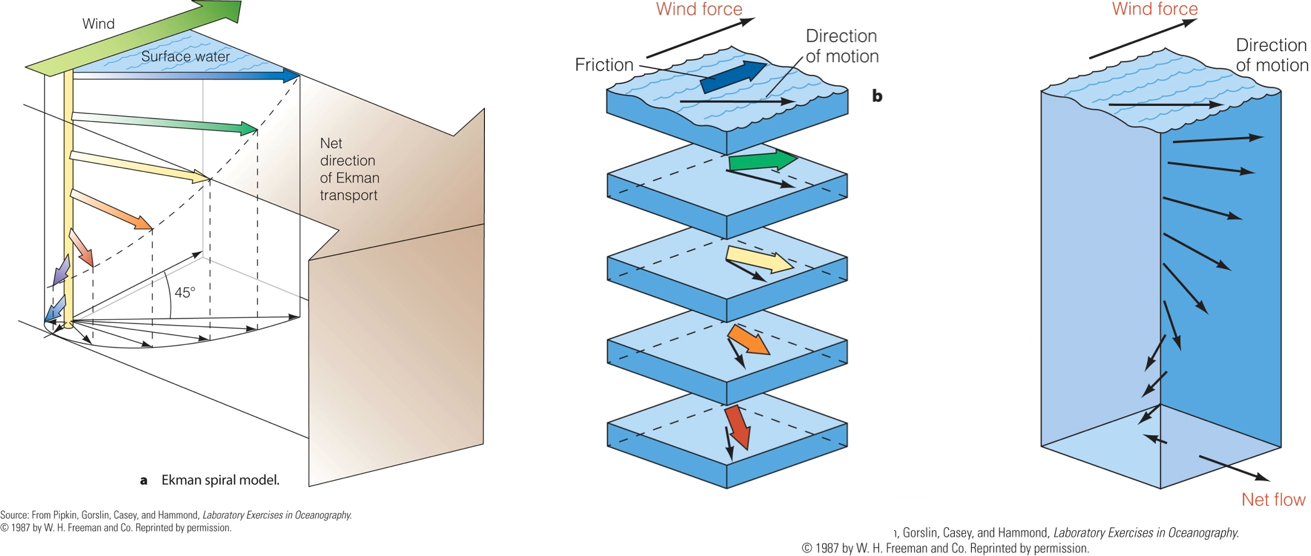
Diagram to show the formation of the surface currents. Water at the very surface is set in motion by the wind, and as such is deflected to the right by the Coriolis Effect. The moving water drags on the layer below it and sets that in motion and so the process continues but gets weaker the deeper it goes. The overall mean direction of the affected layer is to move the water perpendicular to the direction of the wind. Only the upper layer is important for mariners! (Image: Oceanography textbook)
The above diagrams from the course textbook show the prevailing winds and the surface currents that they drive. As Bermuda is located in the North Atlantic, we will focus on that region. The trade winds from the Canaries drives the Equatorial Current from east to west and the southwesterlies drive the North Atlantic Drift from the north east coast of the US towards northern Europe. Note that the currents are limited by the continental boundaries. The Equatorial Current piles into the Caribbean and the Gulf of Mexico and gets stuck, where it warms up considerably. It is forced outwards through the narrow Florida Strait to form a fast moving current known as the Gulf Stream. The North Atlantic Drift hits Europe and a sizable portion of it has transferred its heat to the atmosphere and is then forced south as the much cooler Canary Current. Together these currents form a circulation in the North Atlantic - known as a GYRE.
Things would be a lot different if the world was just covered in water.
Things would be a lot different if the world was just covered in water.
These currents are of critical importance to the North Atlantic region. The central part is essentially stationary and is fluid mechanics terms called stagnant. This is the Sargasso Sea and the lack of winds and surface currents mean that any floating stuff that ends up there, tends to stay there, which may have led to the legend of the Bermuda Triangle. These days the ocean gyres are infamous as the places that plastic ends up. Since the early days of Columbus, sailors have tended to follow the ocean circulation patterns, even though they have to travel a longer distance.
Left: Chart showing Vasa De Gama's voyage, note how his route was influenced by the ocean currents, he certainly did not want to sail a straight line course from Sierra Leone to Cape Town.
Right: A typical chart of the 'Atlantic Circuit' sailed by yachts, although many go directly from the Caribbean to Bermuda in May before heading over to the Azores. (Images: Google)
Right: A typical chart of the 'Atlantic Circuit' sailed by yachts, although many go directly from the Caribbean to Bermuda in May before heading over to the Azores. (Images: Google)
|
ACTIVITIES
Use the Earth simulation to view the surface winds and the surface currents of the world as they are at the moment. How close are they to the idealised images in the text book? Can you identify the principle winds and currents? Wind driven currents question set
|
Ocean Currents Affect the Climate
Just as the movement of the atmosphere can interact and affect the surface currents of the ocean, so can the nature of these currents affects the atmosphere above them. Warm ocean currents have a more rapid rate of evaporation and increases the humidity of the air above. This is frequently experienced in Bermuda, the prevailing south-westerlies have blown across the warm tropical ocean and bring warm, humid air to the island. This warm, humid air is less dense and buoyant. As it rises it cools down and the water vapour condenses to form clouds and rain. In other locations, a cold ocean current has a low rate of evaporation, meaning that the air is far less humid. The air will be colder and drier, so less likely to produce rain.
Just as the movement of the atmosphere can interact and affect the surface currents of the ocean, so can the nature of these currents affects the atmosphere above them. Warm ocean currents have a more rapid rate of evaporation and increases the humidity of the air above. This is frequently experienced in Bermuda, the prevailing south-westerlies have blown across the warm tropical ocean and bring warm, humid air to the island. This warm, humid air is less dense and buoyant. As it rises it cools down and the water vapour condenses to form clouds and rain. In other locations, a cold ocean current has a low rate of evaporation, meaning that the air is far less humid. The air will be colder and drier, so less likely to produce rain.
Other Resources
Nike Trainers 2 - The Sequel! BBC News 19 June 2019
